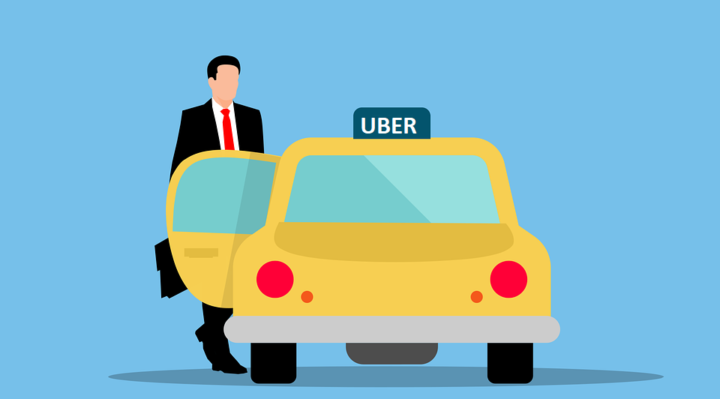Are you looking to create an Uber clone app? Well, you’ve come to the right place! This comprehensive guide will walk you through building your own Uber-like application that can revolutionize the transportation industry. Our team of experts has carefully crafted this article to provide you with all the information you need to create a top-notch app that stands out from the competition and ranks number one on Google. So, let’s dive in!
Understanding the Uber Clone App Concept
Before we begin, let’s grasp the basic concept of an Uber clone app. An Uber clone replicates the original application with certain modifications and customizations to suit your business requirements. It offers similar features and functionality, enabling users to book rides, track drivers, make payments, and rate their experience seamlessly.
How Does Uber Work?

Step 1: Download the Uber App
The first step to starting with Uber is downloading the app from your device’s app store. The app is available for both iOS and Android platforms. Once downloaded, create an account by providing your personal information, including your name, phone number, and payment details.
Step 2: Set Your Pickup Location
After creating an account, open the Uber app and allow location access. The app will automatically detect your current location using GPS. You can also manually enter your pickup address if needed. Confirm the pickup location on the map displayed within the app.
Step 3: Choose Your Ride Option
Uber offers various ride options to cater to different preferences and budgets. These options may include UberX (standard car), UberXL (larger vehicle), UberBLACK (luxury car), and UberPOOL (shared ride with other passengers heading in the same direction). Select the ride option that suits your requirements.
Step 4: Request a Ride
Once you have chosen your preferred ride option, tap on the “Request” button to request a ride. The app will display the driver’s estimated arrival time (ETA) and the fare estimate. You can also see the driver’s rating and reviews from previous passengers.
Step 5: Track Your Driver
Once a nearby driver accepts your ride request, you can track their location on the app’s map. The app provides an ETA for the driver’s arrival at your pickup location. You will also receive notifications and updates regarding the driver’s progress.
Step 6: Enjoy Your Ride
Once your driver arrives, verify their identity by confirming their name and vehicle details provided in the app. Uber provides this information for safety and security purposes. Hop into the car, buckle up, and enjoy your ride. The app displays the estimated time to your destination, and you can also monitor the route.
Step 7: Payment and Ratings
At the end of your ride, Uber provides a seamless payment process. The app automatically charges your selected payment method, eliminating the need for cash transactions. You can add a tip for your driver if desired. After the ride, you can rate your driver and provide feedback on your experience.
Step 8: Receipt and Trip History
After completing the ride, Uber sends you a receipt via email. The receipt includes details such as the fare breakdown, distance traveled, and the route taken. You can also access your trip history within the app to review previous rides, payments, and ratings.
The App Platform
The core of any Uber clone app template is the app platform itself. It serves as the foundation for building and customizing your ride-hailing application. The app platform typically consists of three key components: the passenger app, the driver app, and the admin panel. Let’s look at each of these components and their features.
Uber Passenger Features of Uber
The passenger app is designed to provide a seamless experience for users who require transportation services. Here are some of the key features commonly found in the passenger app section of an Uber clone app template:
- User Registration and Authentication: Enable users to create accounts, log in securely, and manage their profiles within the app.
- Ride Booking: Allow users to enter their pickup and drop-off locations, select the desired ride type, and estimate fares before booking a ride.
- Real-Time Tracking: Integrate maps and GPS services to give users real-time updates on their driver’s location and estimated arrival time.
- Payment Integration: Facilitate secure and convenient payment options by integrating popular payment gateways, enabling users to pay for rides seamlessly.
- Ride History and Ratings: Give users access to their ride history, digital receipts, and the ability to rate and review drivers based on their experience.
Uber Driver-Related Features
The driver app component of the Uber clone app template focuses on providing a user-friendly experience for drivers. Here are some essential features commonly included in the driver app section:
- Driver Registration and Approval: Allow drivers to register within the app by submitting their necessary information and documentation. Admins can review and approve driver applications through the admin panel.
- Ride Acceptance: Drivers can accept or reject ride requests based on availability and proximity to the pickup location.
- Navigation and Route Optimization: Integrate navigation services to guide drivers to their destinations efficiently, considering traffic conditions and optimal routes.
- Earnings and Trip History: Drivers can track their earnings, view their completed trips, and access payment-related information through the driver app.
- Communication with Passengers: Enable drivers to communicate with passengers through in-app messaging or call functionalities, ensuring a smooth and seamless ride experience.
The Admin Panel for Platform Administration.
The admin panel is a vital component of the Uber clone app template, providing comprehensive control and management over the entire platform. Here are some key features typically included in the admin panel:
- User and Driver Management: Admins can manage user and driver registrations, profiles, and related information.
- Ride and Booking Management: Monitor and track ride bookings, manage ride requests, and resolve any issues or disputes that may arise.
- Fare Management: Set and adjust fare rates based on various factors, such as distance, ride type, and surge pricing.
- Analytics and Reporting: Access valuable insights and reports on user activity, driver performance, and financial data to make informed business decisions.
- Promotions and Discounts: Admins can create and manage promotional campaigns, discount offers, and referral programs to attract and retain users.
Choosing the Right Technology Stack
Selecting the appropriate technology stack is crucial for developing a high-performing and scalable Uber clone app. Here are some key technologies you should consider:
- Backend Development: Use robust frameworks like Node.js, Ruby on Rails, or Laravel to handle server-side operations efficiently.
- Database Management: Utilize reliable databases such as MySQL, PostgreSQL, or MongoDB to securely store and manage user and driver data.
- Real-time Communication: Implement real-time communication using Socket.io or Firebase to enable seamless tracking and notifications.
- Mobile App Development: For developing the mobile app, choose frameworks like React Native or Flutter to create cross-platform applications that work seamlessly on both iOS and Android devices.
Testing and Deployment
Thoroughly test your Uber clone app to ensure it functions flawlessly across different devices and operating systems. Perform unit, integration, and user acceptance testing to identify and fix bugs or issues.
Once you’re confident in your app’s performance, deploy it to your preferred hosting platform and make it accessible to users worldwide. Consider optimizing your app for search engines by implementing best SEO practices, including keyword optimization, meta tags, and mobile responsiveness.
Conclusion
Congratulations! You have now gained insights into creating your very own Uber clone app that has the potential to dominate the market and outrank your competitors. contact Ride Sharing App Development Company for the following steps outlined in this article and employing the right technology stack, you can build a powerful and feature-rich app that attracts users and boosts your online presence.



